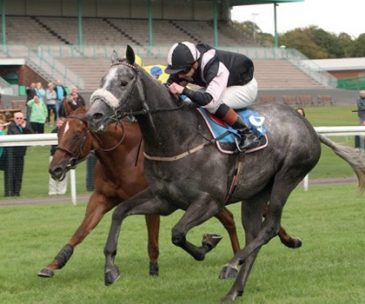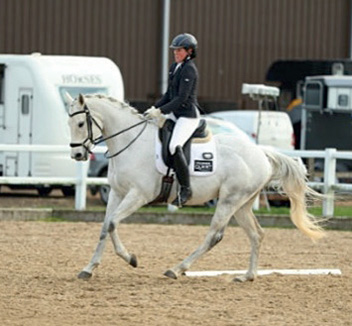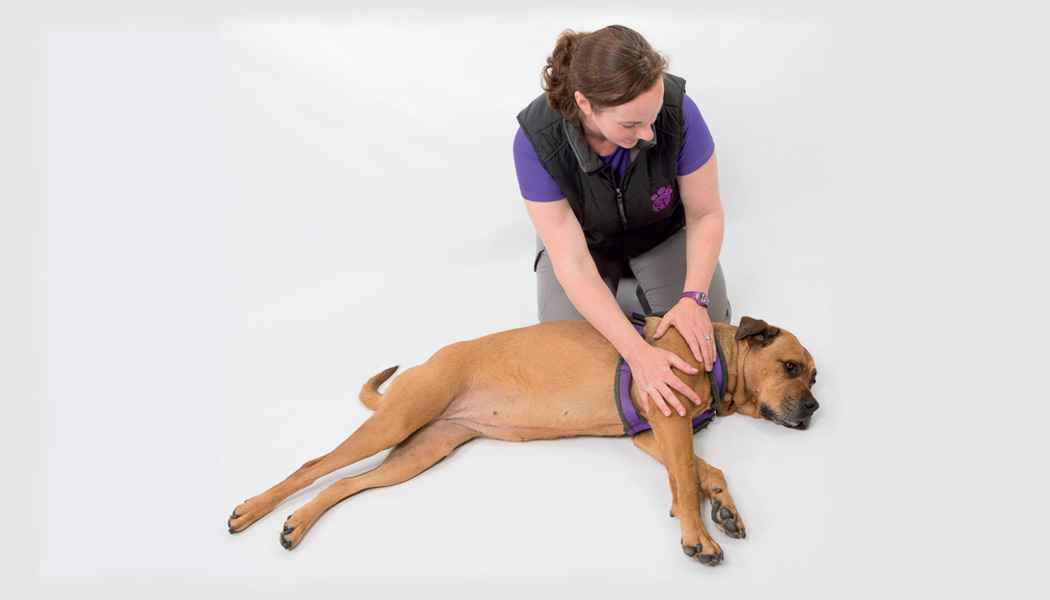Are we truly allowing our ex-racers to ‘go forwards’ ?
by Louise Robson
I Recently watched a video online of someone struggling to get her ex racer into a contact. In the video the horse showed some head lobbing and a general resistance to any form of pressure on the rein and therefore the horse would be ‘running’ around the arena. The trainer was guiding the pupil of how to correct her position to get her ex racer to accept the contact. Her advice was;
- To sit down into the horse
- To keep her shoulder blades back and together
- To lock her elbows to her side, with a firm grip on the rein and then push/ drive the horse forward into the rein contact she has provided.
As a retainer of ex racers I could see that this concept would, in time, possibly work; however, what I also know that in terms of longevity, progressing in training and most importantly, the soundenss, or comfort of the horse would not be maintained. Sometimes, the problem that we have isn't that the training or advice being given is incorrect advice, its advice which doesn't take into account the breed that is being trained. With any ex racer the weakest point in their conformation is their back. They lack core strength and posture after their let down period. Their neck is their fifth leg which they use to balance themselves. The breed itself isn't bred for us to ‘sit’ on them. They are built for speed and endurance. With correct training both ridden and in hand we can develop the core muscles so they are strong enough to allow the rider to sit on them, but I cannot see how in the early stages of training by ‘forcing’ the riders seat into the horses back how that will help with the strengthening, correct training and development of the horse. A common misconception is that ex racers speed up because they ‘just want to go fast.’ The reason that your ex racer changes in rhythm when on the flat is due to lack of balance. When the lose their balance or feel like their balance is being tested they speed up. Its like us humans in life. If we meet a problem, we try and get through it as fast as possible so its done and finished and gone. The one thing that most ex racers hate is the feeling that they cannot move forward, or that the ‘front door’ isn't open. Its finding a balance between you as a rider feeling like you can create a language and relationship with your horse so you can have control, but also so your horse doesn't feel confined, or ‘pinned down’ into a frame that they must sustain.
The scales of training apply to any horse, any breed, any age and any level. The way in which you have to approach each scale may be different, and that is where your training comes in; however, it must not be lost, or even sacrificed to obtain a desired picture.
- Rhythm
- Supplness
- Contact
- Impulsion
- Straightness (which leads to 6 which is collection)
They are meant to be achieved in this order, although there are occasion where one can be skipped in order to improve another. Until your horse is working in a rhythm he/she will not become supple. Until the horse is supple the contact will be inconsistent (degrees of suppleness vary according to the level of training) If the horse is not working through a supple back, forwards with impulsion to a consistent, elastic contact, he/she will not be straight. Collection could be referred to as balance, which we as retainers need to ask ourself at every level; where does the balance sit?

Mission Impossible
We always have to remember and refer to; what do we have when we start? i.e. how has our racehorse been trained and allowed to go? And, where do we want to end up? It is difficult with social media these days to not get caught up in the hype, or seeing someone progressing quicker than you and you being tempted to try and keep up. As a retainer you have to remember that each horse has its own journey and there is no such thing as a ‘quick fix,’ especially when it comes to the ex racehorse!
Looking at the “Dubai Prince Change’ image you can see from the top photograph as a racehorse, that this is what we start with! A horse who is long in the frame, is allowed to travel (‘front door is open’ the hind limb reaching through, the croup higher than that of the front end and a giving rein to encourage the length of stride. Looking at the bottom right image of the same ‘moment in time’ in the canter phase as a retrained racehorse. The hind limb action is still reaching under his body; however, the croup is now lower than the wither as Dubai Prince has been given the time and training to become stronger over the back, which has allowed and encouraged the hindleg to take the weight. As a result the wither and shoulder have been able to lift up, with the neck forward, out and not being used to balance. The ‘front door’ is still open and he can move freely forwards, but in a new balanced way compared to the top photograph. For the level of training that he was at in this photograph, the poll slightly dips down and away, and in an ideal world you would want to see the poll half an inch higher. However; for where he was in his training at this moment in time, he felt comfortable in that position and wanted to move freely forward. This is the sacrifice you take for your horse as a retainer, and build on it over time rather than force the head to come up and the back and the neck to become stiff. I see many an ex racer that has been taught to ‘put its head down’ and the rider then telling me that they're struggling in their dressage tests with; medium trot, transitions and general ride ability. I would almost be tempted to call this the ‘shut down’ stage. In the ‘shut down’ horse you will see;
- Resistance
- Contact issues
- Imbalance issues

Mission Impossible
It is easy to get into the ‘shut down’ stage because it will feel like you have made your exracer quieter, slower and therefore in some peoples head ‘more rideable.’ In fact all you end up seeing is a horse who cannot truly move forward, swing across the back into a soft contact and ultimately a harmonious pairing. We also have to bear in mind the comfort level of the ‘shut down’ horse. If all our ex racer is doing is ‘putting his head down’ then they will not be through the back and engaging their hind quarters. Much strain will be put in the back, under where the rider sits and the hindquarters. With these added strains you will get soreness through the back, which in a worst case scenario can lead to orthopaedic problems as the limbs are being over loaded to compensate for the sore back.
The reality is is that all of the energy has to go somewhere! We have a big advantage in that our ex racers want to travel forwards, its just how dow we use that explosive energy, with their fast twitch fibres ‘for good’ in a new way of going, rather than trying to force them to be slow and steady. Lots of gear changes, varying sized circles and transitions within and between each pace and also an allowing hand, with a soft seat from the rider.
In the early stages it is hard to ‘sit up’ on our ex racers. They do slightly pull us forward from the hip, this s because them themselves are on the shoulder and struggling to maintain a throughness through the back and take us with them. Yes, we need to be able to sit up, but we need to be kind on ourselves and to see it as progression through the levels. Take it, if you will as a riders ‘scales of training’ alongside your horses. As their rhythm, contact, suppleness, straightness and impulsion become better so too do yours. if you can ride exercises that help with your horses straightness and balance, then you will be able to sit straight and in better balance.
There is no arguing that one of the hardest things for the ex racer to understand and be able to do is maintain and go forward into a contact. For your ex racer to be in a true contact, they need to be connected from back to front; however, how can we do this as in the early stages of retraining the back is a very weak point in the ex racer. The posture of the early ex racer is incorrect. They lack core muscles and need time to develop these. Long reining, long reining over poles, lunge work in a pessoa, and hacking up and down hills will all help build them up. Spending less time on their backs will only help them in the long run. Once under saddle, we need to think of suppleness through the jaw to allow the release of the fifth leg (the neck) which in turn will release the back and then allow us to work from back to front.

Baby Lawrence
This is most true of Mission Impossible aka Silver who had 67 runs before he started his retraining as an 11 year old. He is described as a ‘war horse’ of the racing world, but also means he was rather set in his ways. The contact has been the hardest thing for him to understand and maintain, mainly because he is so dependant on his neck for his balance. As you can see from the top image (‘Silver change”) Silver has a rather large canter with a big hind limb action that pushes the balance almost up and over the top of him. When being asked to ‘sit and take the weight’ behind he would struggle to find space under his body for that big hind limb movement to go. Lots of canter leg yields both from the quarter line to the track and on a circle helped place the shoulder on a different line to that of the hindleg which allows it to come through and under his body. You can see from the photo abovethat the neck of Silver is very ‘out’ and could be a fraction rounder. The same with Dubai prince, for the level that he is at this is sufficient until he becomes more comfortable and understanding in his balance and way of going. This canter keeps the forward movement without impinging on the canter quality.
Its not just on the flat that we can slightly ‘over control’ a situation. I thinks its very important for all horses to be seen free so we can see where their ‘natural’ way of going sits, o we as riders can asses, see what we can improve, but also, when we just need to leave them alone and let them go in a way that allows them to be happy athletes. Meet Lawrence aka Carole’s Lord. I knew from the moment that we lose jumped him that he would go onto be a superstar in the eventing world. You can see from the photo ‘baby Lawrence’ that this horse never had a problem with scope and tidiness over a fence, even in the early stages of retraining. Ironically he always struggled with maintaining a true three beat canter on the flat, unless he was going a little ‘too quick’.
Circles, transitions and lots of ‘square riding’ has helped him find his balance and strength over his back. With

most of the ex racers if you can position the shoulders on a slightly different track to the hidnlegs, it helps with the rhythm, balance, suppleness etc and their never truly straight so they cannot disconnect and fall onto their shoulders (Which is what most naturally want to do) With his wonderful rider Sarah Perry, they have worked hard on being able to maintain a three beat canter into a fence, without interfering too much with him, so when he jumps with a jockey on board (‘Lawrence jumping’) he is still able to jump the way he did on day one of his retraining.
No matter what type of ex racer you have, there is always a ‘way forward’ and through your retraining problems. I think its very important to always assess as you go along the way and ask yourself; am I happy for the level that they're at. Always be willing to sacrifice either your position, the ‘show frame’ or even a rosette for your horses happiness whether it be mentally and or physically. It will pay off in the long run!









